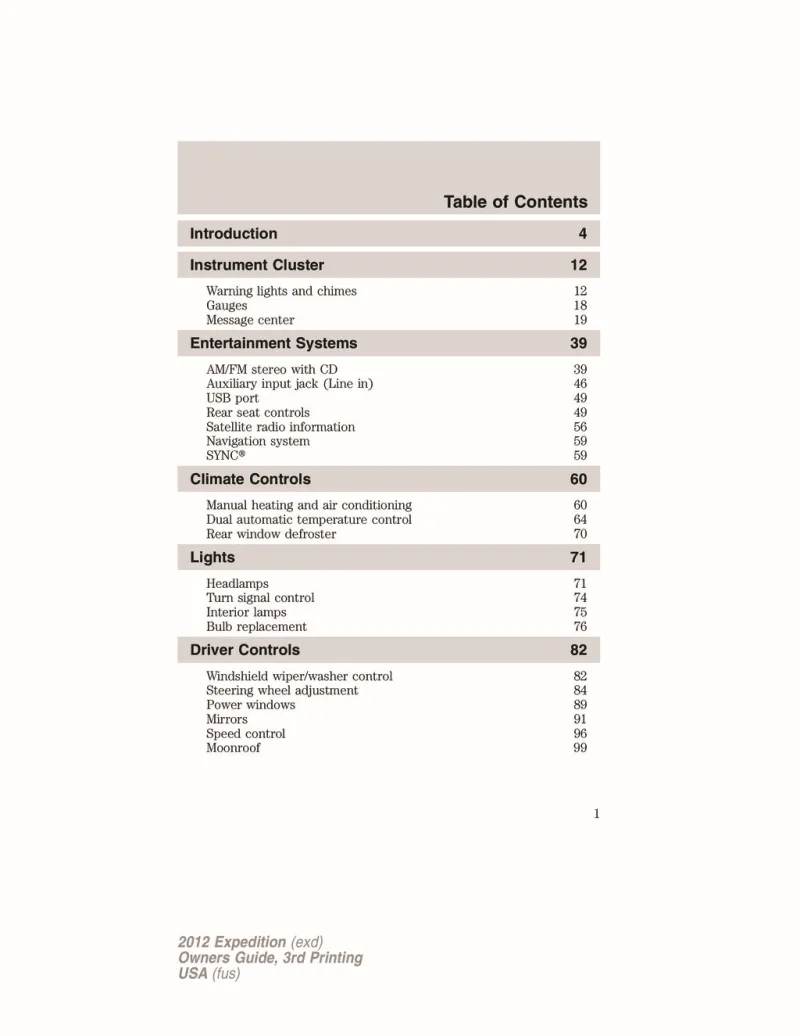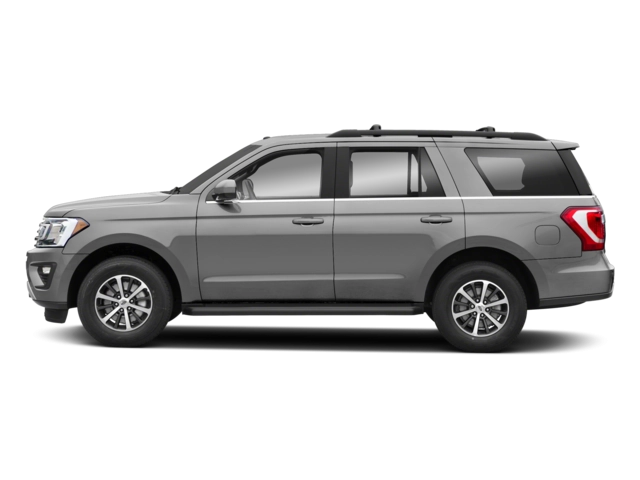2012 Ford Expedition Owner's Manual

Table of Contents
2012 Ford Expedition Overview
Introduction
The 2012 Ford Expedition is an impressive full-size SUV that seamlessly combines power, comfort, and cutting-edge technology. Renowned for its spacious interior and robust towing capabilities, this vehicle is designed for families and adventurers alike. With its commanding presence on the road, the Expedition remains a strong contender in the SUV market, delivering versatility and dependability wherever the journey leads.
Powertrains
Under the hood, the 2012 Ford Expedition features a powerful 5.4-liter V8 engine that generates 310 horsepower and 365 lb-ft of torque. This engine is paired with a 6-speed automatic transmission, providing smooth shifting and enhanced fuel efficiency. The Expedition is available in both rear-wheel drive and four-wheel drive configurations, allowing drivers to choose the best option based on their driving preferences and terrain requirements. With its robust towing capacity of up to 9,200 pounds, the Expedition makes hauling trailers, boats, or gear an effortless task.
Trims
The 2012 Ford Expedition is offered in several trims, including the XLT, Limited, and the high-end King Ranch. Each trim level is equipped with an array of features, allowing customers to find the perfect match for their lifestyle. The XLT comes with essential amenities, while the Limited adds luxury touches like leather seating and advanced technology packages, and the King Ranch provides an upscale experience with exclusive styling and top-tier features.
Features
Inside, the 2012 Expedition offers ample space for up to eight passengers, alongside convenient features like a customizable infotainment system, Bluetooth connectivity, and premium audio options. Safety is paramount, with standard features such as multiple airbags, stability control, and a rearview camera. Optional upgrades include a rear entertainment system and navigation to enhance every journey.
Owners Manual
The owner's manual for the 2012 Ford Expedition serves as an invaluable resource, providing detailed information on maintenance schedules, operating instructions, and troubleshooting tips. It is essential for ensuring the longevity and optimal performance of the vehicle, guiding owners through various features and care recommendations to enjoy their Expedition fully.
User manual download
The Ford Expedition owner manual for the 2012 model year is to be found in PDF downloadable format on this page. The owner manual for the model year 2012 is free and in English, but the repair manuals are usually not easy to get and may cost more.
Manual Questions
Fill the form below and someone will help you!

